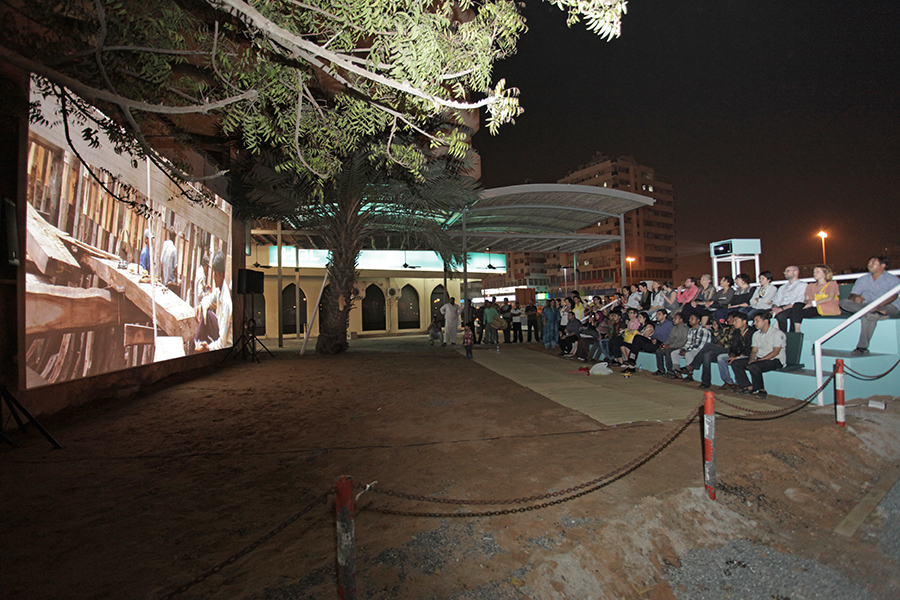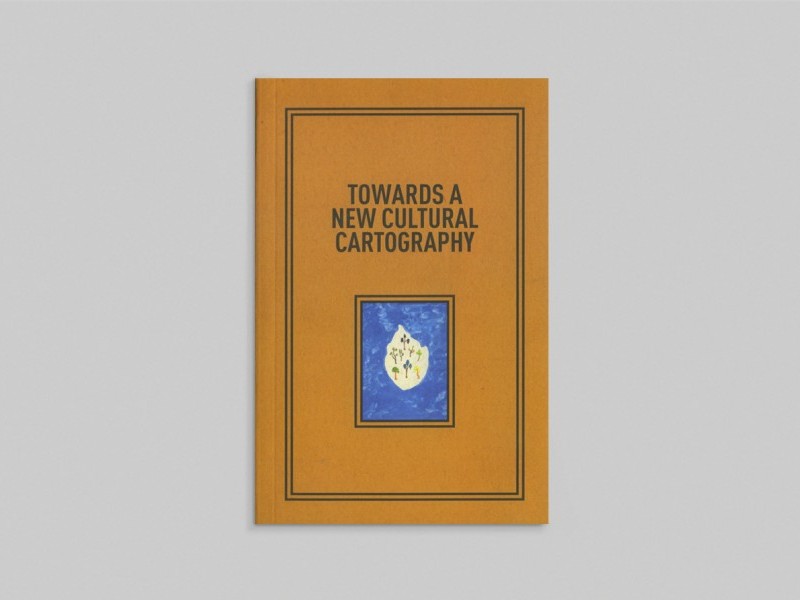
From Gulf to Gulf to Gulf, 2009-2013
CAMP
From Gulf to Gulf to Gulf, 2009—2013
Colour video projection with sound
80 minutes
Installation view
Commissioned by Sharjah Art Foundation Production Programme
2010
search


CAMP
From Gulf to Gulf to Gulf, 2009—2013
Colour video projection with sound
80 minutes
Installation view
Commissioned by Sharjah Art Foundation Production Programme
2010
Boats are a form of freedom. They are carriers, and a medium of escape. Four years ago, we became interested in the boats and sailors in Sharjah, most of which are from Gujarat in India, Southern Iran and Pakistan. They have been coming to Sharjah and Dubai for as long as these ports have existed. In 2009, our research resulted in two related works, Wharfage and Radio Meena, which were featured at Sharjah Biennial that year. Now, in 2013, the boats dock on the other side of Sharjah Creek; residents can view the boats, but perhaps they cannot understand them in the same way.
There is a commonly held notion that trade carries cultures and languages across oceans, and produces sites of equivalence or familiarity, but there are stark differences between port towns in Gujarat, Iran, the UAE and Somalia. To us, encounters between these cultures have been much more multifaceted and unassimilable. A wooden construction built by a few people in coastal Gujarat can pass through or touch a remarkable number of ideologies, winds, pirates and navies, sanctions and treasures, fears and wants, and forms of boredom and play.
In late 1999, the boat known as Sabir Piya ('The Patient One', named after a saint from Kaliyar, India) was born in a godi (literally 'lap', as in mother’s lap, but also a dry dock) next to the main road in Jam Salaya, Gujarat. It was built by a crew of about a dozen men. In March 2002, the boat made its first trip – but without an engine, which would be installed in Dubai – carrying a cargo of sugar. Its first trip with an engine was from Sharjah to Somalia that year, carrying Zakat (donations) from Kuwait:hospital equipment, piles of used clothes and the usual cooking oil and macaroni. Most of this was unloaded onto a beach in El Ma’an in southern Somalia. The boat returned to Bosaso in Puntland, also in Somalia, and from there carried goats to Hamriya port in Dubai.
Such trips, with an ostrich here and the odd limousine there, became the rhythm of the boat, broken only by monsoons back home. In November 2009, Sabir Piya caught fire on Sharjah Creek, sunk and was almost entirely destroyed. It was towed back to Gujarat as a pile of timber. Today it lies in another godi, not far from its birthplace. Next year the boat will float again, but it will be quite a bit longer, and two feet higher.
We learned of Sabir Piya’s itineraries through official port records, but also in the form of stories. This new work for Sharjah Biennial 11 draws from four years of dialogue, friendship and video exchange with sailors. Through the medium of a feature-length film, different experiences and encounters at sea (and on adjacent land) are not so much tied together as allowed to speak. The Biennial’s screening venue is also a site for further exchange: cell-phone videos and audio will be transmitted between sailors, traders and others over the three-month period of the exhibition.
2013
This project was part of Sharjah Biennial 11
Commissioned for Sharjah Art Foundation’s Production Programme, 2010
CAMP
2009—2013
Colour video projection with sound
80 minutes
Installation view
Commissioned by Sharjah Art Foundation Production Programme
2010



This publication takes as its starting point Yuko Hasegawa’s curatorial concept for Sharjah Biennial 11: Re:Emerge – Towards a New Cultural Cartography and March Meeting 2013.